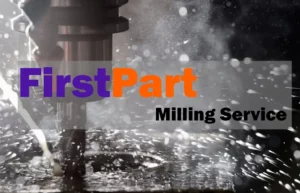Rapid prototyping consists of two steps which are:
Assembly verification:
Due to the flawless connection of RP technology, it can quickly manufacture validate, structural parts and it can also analyze product structure and assemble the product, this is done because after this the product design can be evaluated and therefore The cycle of development is short and cost of development are reduced and then it improves the competition in the market.-rapid prototype and manufacturing
Delivery verification:
after batch mold design if you want to check and evaluate the manufacturing process, batch fixture design, to assemble, and some more with a prototype to avoid production problems and huge losses this is known as delivery verification which is held before the delivery of a product. The batch production process can be a cause of error in the delivery process.
Injection molding:
Wire spools, packaging, toys, pocket combs, small tables, some musical instruments, one-piece chairs, Storage containers, bottle caps, automotive parts and parts, mechanical parts, and most other plastic products can be made by a technique known as Injection molding.it is one of the popular and most common technique and by using this technique we can produce many items of the same object with higher volume. A screw-type or ram plunger is used by Injection molding to push melted plastic material into a mold hole. To contour the mold, it freezes to any shape which corresponds. thermoplastic and thermosetting polymers use this process. the ability to flow on heating and softening Thermoplastic is also an element of protection on thermosets. the injection molding machine can be damage If the thermosetting polymer is not evacuated right on time from the injection barrel, chemical crosslinking can happen due to which the screw and check valve can seize as well.
CNC machining:
CNC machines are the machines that are operated through some numerical control, and a software program is used to control an object. G-code is the language behind CNC machining the purpose of this language is to control the various behaviors of a related machine, such as coordination, speed, feed rate, etc.
CNC machining is the reason due to which it is possible to pre-program the speed, velocity, and position of machine tool functions and execute them and run them through software in iterations, predictable cycles, but with a very little amount of involvement from all human operators. this process has been adopted in all corners of the manufacturing sector due to these capabilities and is particularly important in the areas of metal and plastic production.
Nowadays CNC protocols, parts production through pre-programmed software are mostly automated. computer-aided design is used to automate the dimensions of a given part are set with (CAD) software and then converted into an actual finished product with computer-aided manufacturing software. here are some types of CNC machines.
Lathe: The pieces are cut into a circular direction with sequencing devices. the cuts employed by laths are performed accurately and with the high velocity with CNC technology.
Plasma cutter: In a plasma cutter, the plasma torch is used to cut the material.
Water jet cutter: Such as granite and metal these hard metals can be cut using CNC machining and there are water jet devices that cut hard materials by applying a pressure of hard water on it.
3d printing:
The method in which plastic or metal is layered on one another and forms a shape is known as 3d printing and a three-dimensional object is formed as an output, such as eyeglasses or a pair of other 3D objects. Traditional ink-based printers are now lacking behind and 3d printers are in great demand and those were 2 dimensional while 3D printing has been used constantly and accordingly in engineering to create engineering prototypes, recently there held some advancements in 3d printing and now these printers are creating objects that are comparable to conventionally manufactured objects.
However, advancement in technology and printing have now enabled printers to create materials and object, due to which technology applications are expanding and prices are falling day by day, there are a lot of major implications but the first one is that more goods will be manufactured at or close to their point of purchase or consumption. domestically some things are produced and this is an optimistic sign.
There are a lot of implications but another one is that goods will be infinitely more customized, as creating tools again is not required to replace them, just twist in instructions in software. just as quality control did in the age of parity and Creativity in meeting the needs of individuals will emerge.










